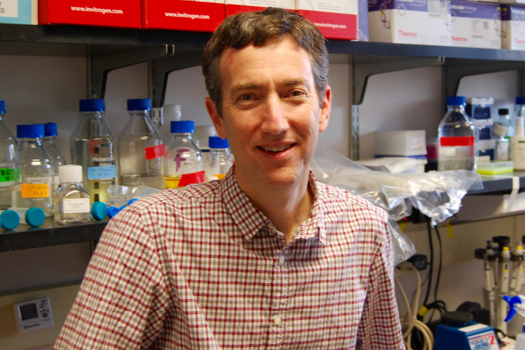
April 30, 2020
Up until recently, Adam Lauring, MD, PhD, Associate Professor of Internal Medicine in the Division of Infectious Diseases, and Associate Professor of Microbiology and Immunology and Ecology and Evolutionary Biology, has been focused on understanding how different viruses, like the influenza virus, evolve within people and spread.
In response to the COVID-19 pandemic, Dr. Lauring has turned his research efforts in his lab towards investigating the SARS-CoV-2 (severe acute respiratory syndrome coronavirus 2) virus, which causes COVID-19. He now has two studies underway that utilize genome sequencing to help determine how the virus’s behavior changes from one person to the next and how it transmits.
“Both of the studies are asking similar questions, just in different ways,” said Dr. Lauring. “We are looking at who is getting infected, where they are getting infected, and how it spreads within a household, health care settings, and the community.”
SARS-CoV-2 Sequencing Study
Dr. Lauring and his research team are performing whole genome sequencing of SARS-CoV-2 from residual clinical specimens and other specimens collected through observational cohorts. Data gathered from this study will inform the transmission and spread of the virus in health care settings and communities.
Clinical Residual Specimens in CDC Surveillance Studies
The Centers for Disease Control and Prevention (CDC) is now using their influenza vaccine effectiveness surveillance systems for COVID-19 surveillance and response. Each year, the CDC requests clinical residual specimens for virologic characterization, vaccine strain selection testing, and antibody characterization. The CDC has requested specimens from COVID-19 patients and non-COVID-19 test-negative controls using the same protocol. The University of Michigan (U-M) is one of six centers in the nation participating. Dr. Lauring, in collaboration with colleagues at the School of Public Health, is leading these efforts at U-M.
Through the genome sequencing taking place in both studies, Dr. Lauring will be able to see where the virus is coming from, estimate the infected population size, discover where flare-ups could occur, and determine how to best contain them. His hope is that the data collected from these studies will impact future public health responses to the virus.
N95 Disinfection and Reuse Project
In addition, Dr. Lauring was involved in the N95 disinfection and reuse efforts, a partnership at the University of Michigan involving the Central Sterile Processing Department (CSPD), College of Engineering, and Medical School. Dozens of researchers collaborated from both schools to assess the methods that best inactivate virus particles on N95 masks and determine how many times masks can be treated by those methods and still retain their protective capabilities. Working with Occupational Health Services, the decontaminated masks are then tested for their ability to form a seal on a person’s face using a fit test.
Dr. Lauring and his team were involved on the testing side. They determined the effectiveness of various decontamination methods for inactivating influenza viruses on the masks.
Reprocessing of the N95 masks went live on April 3. As of April 21, 4,176 masks have been reprocessed, with an average of 400 masks being reprocessed daily.
Learn more about the N95 Disinfection and Reuse Project: U-M Engineers Work to Disinfect N95 Masks for Frontline Medical Personnel.
Keith Kaye, MD, MPH, Professor of Internal Medicine and Director of Research for the Division of Infectious Diseases, was also involved in this project, leading work efforts for the Division. Listen to Dr. Kaye discuss the project and challenges that were faced here.
In addition to Dr. Lauring’s research, U-M researchers have launched a wide range of research projects to study and address the coronavirus pandemic – learn more.



